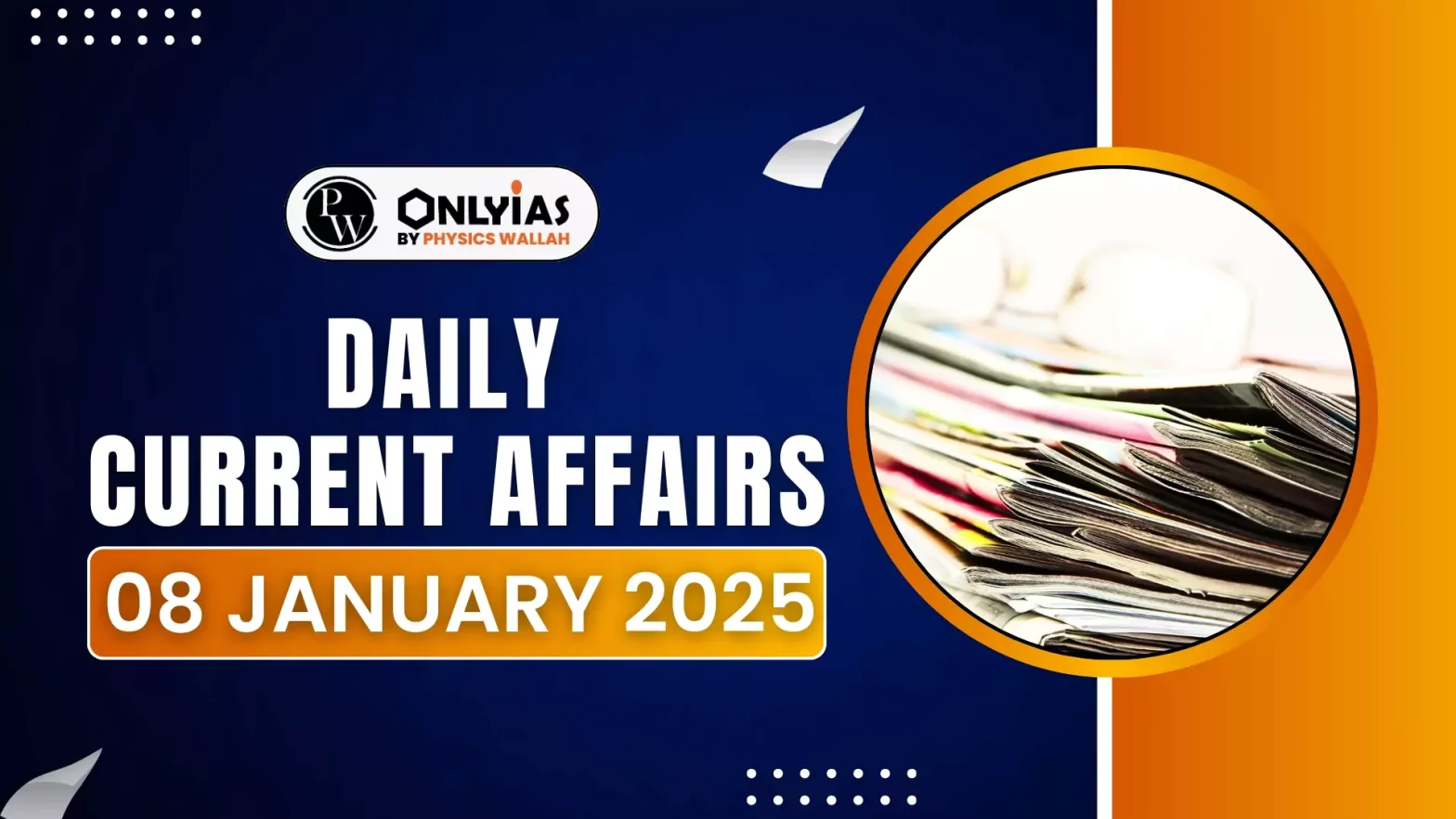The National Statistics Office (NSO), Ministry of Statistics and Programme Implementation (MoSPI) is recently released, the First Advance Estimates of Annual Gross Domestic Product (GDP) for the Financial Year (FY) 2024-25 along with its expenditure components both at Constant (2011-12) and Current Prices.
About National Statistical Office (NSO)
- Formation: NSO was formed in 2019 by merging the Central Statistical Office (CSO) and the National Sample Survey Office (NSSO).
- Recommendation: The establishment of NSO as the nodal body for core statistical activities was first suggested by the C. Rangarajan Committee.
- Affiliation: NSO operates under the Ministry of Statistics and Programme Implementation (MoSPI).
- Function: It collects, compiles, and disseminates reliable, objective, and relevant statistical data.
|
Enroll now for UPSC Online Classes
Key Highlights of India’s GDP Estimate (2024-25)

- GDP Growth:
- Real GDP growth estimated at 6.4%, down from 8.2% in 2023-24.
- Nominal GDP expected to grow by 9.7%, reaching ₹324.11 lakh crore.
- Sectoral Growth:
- Primary Sector: Growth of 3.6%, a recovery from 2.1% in 2023-24.
- Secondary Sector: Growth of 6.5%, down from 9.7% in 2023-24. Manufacturing being the largest contributor (14%) followed by Construction (9%).
- Tertiary Sector: Growth of 7.2%, down from 7.6% in 2023-24.
- Consumption Expenditure:
- Private Final Consumption Expenditure (PFCE): Growth of 7.3% compared to 4% in the previous year.
- Government Final Consumption Expenditure (GFCE): Growth rebounded to 4.1%, up from 2.5%.
| Private final consumption expenditure (PFCE) is defined as the expenditure incurred by the resident households and non-profit institutions serving households (NPISH) on final consumption of goods and services, whether made within or outside the economic territory.
Government Final Consumption Expenditure (GFCE) is the total amount of money the government spends on buying goods and services, including employee compensation. |
- Gross Value Added (GVA):
- Real GVA growth: 6.4%, down from 7.2% in the previous year.
- Nominal GVA growth: 9.3%, reaching ₹292.64 lakh crore.
- Net Exports:
- Typically a negative contributor to GDP due to higher imports than exports.
- The drag effect grew by 144%, though the overall deceleration from 19.6% to 13.3% suggests improvement over time.
Observations
- Economic Recovery:
- GDP growth suggests recovery after Covid-induced disruptions.
- Growth primarily attributed to a low base effect in FY22 and FY23.
- Growth Deceleration:
- The second term of the current government has witnessed slower growth compared to the first term.
- Contraction in GDP (-5.6%) in 2020-21 impacted long-term growth.
- Investment and Consumption:
- Investment growth driven largely by public spending.
- Private consumption remains muted, impacting the largest GDP engine.
About GDP
- GDP is a monetary measure of the total market value of all final goods and services produced within a country over a specific period.
- Purpose: Used to assess the economic health of a country or region.
- Types of GDP:
- Nominal GDP
- Measures economic output using current prices without adjusting for inflation.
- Calculation: All goods and services are valued at their selling prices in the year they are produced.
- Usage:
- Useful for comparing output within the same year.
- Expressed in local currency or U.S. dollars at current exchange rates for international comparisons.
- Real GDP
- An inflation-adjusted measure of economic output, reflecting the actual quantity of goods and services produced.
- Real GDP is calculated using “constant” prices, removing the effect of inflation or price changes.
- Estimating Real GDP
 Base year is used to estimate real GDP and is updated every 5-10 years.
Base year is used to estimate real GDP and is updated every 5-10 years.- The National Statistical Office (NSO) is responsible for revising the GDP base year to reflect changes in prices and economic output.
- Purpose: Allows for year-to-year comparisons by showing real growth or decline in production.
- Calculation:
- Uses a GDP price deflator to account for price changes between the current year and the base year.
- Nominal GDP is divided by the deflator to obtain real GDP.

Check Out UPSC NCERT Textbooks From PW Store
About GVA
- GVA measures the value of goods and services produced in a specific area, considering the value added to a product. In India, GVA is measured at ‘basic prices’.
- Calculation of GVA: It is calculated by deducting the intermediate value of consumption from the total output produced, reflecting the added value generated during the production process.
- The formula for calculating GVA is: GVA = GDP + Subsidies on products – Taxes on products.
- GDP is greater than GVA, due to the higher amount of taxes received compared to subsidies provided by the government.
![]() 8 Jan 2025
8 Jan 2025


 Base year is used to estimate real GDP and is updated every 5-10 years.
Base year is used to estimate real GDP and is updated every 5-10 years.
